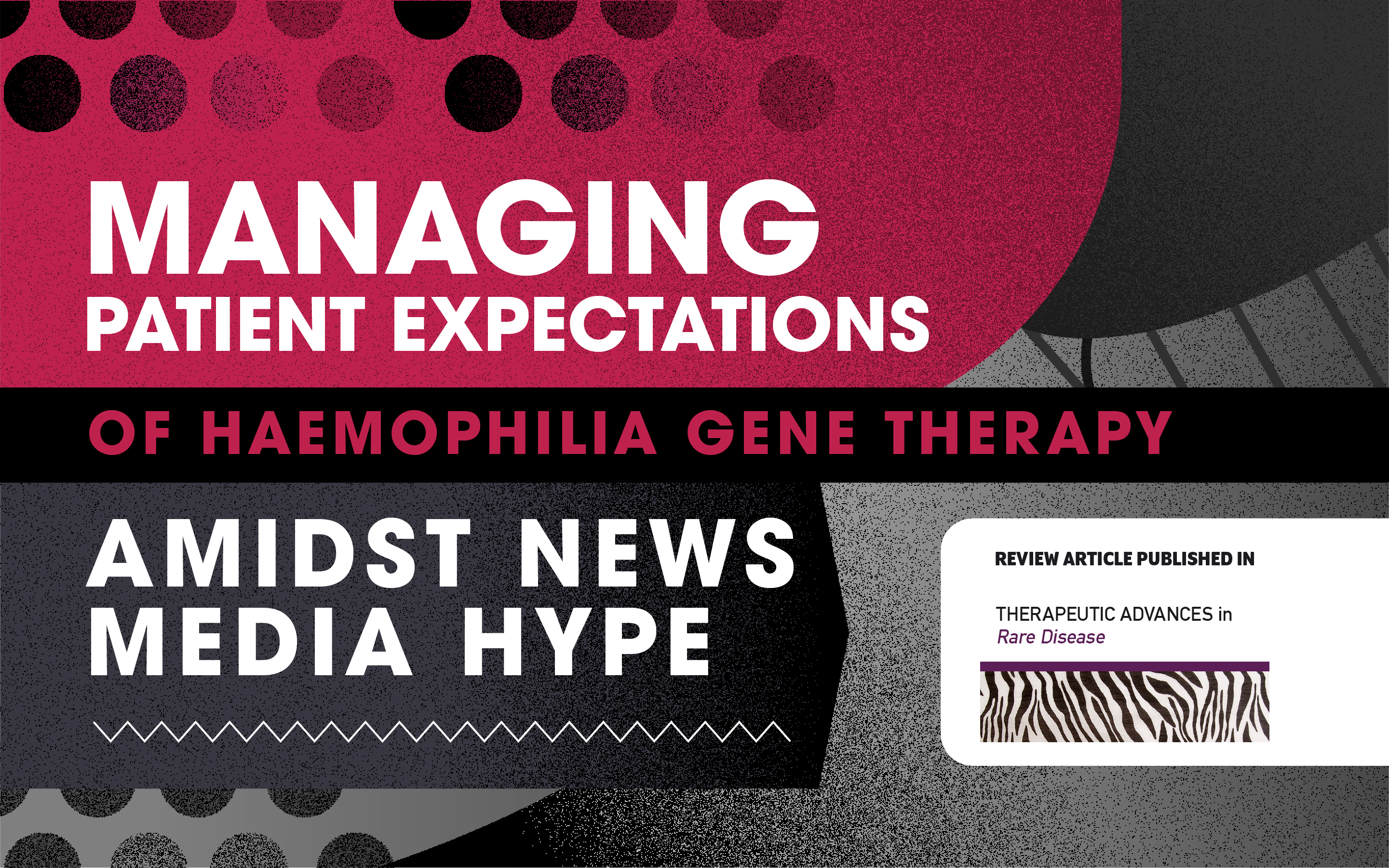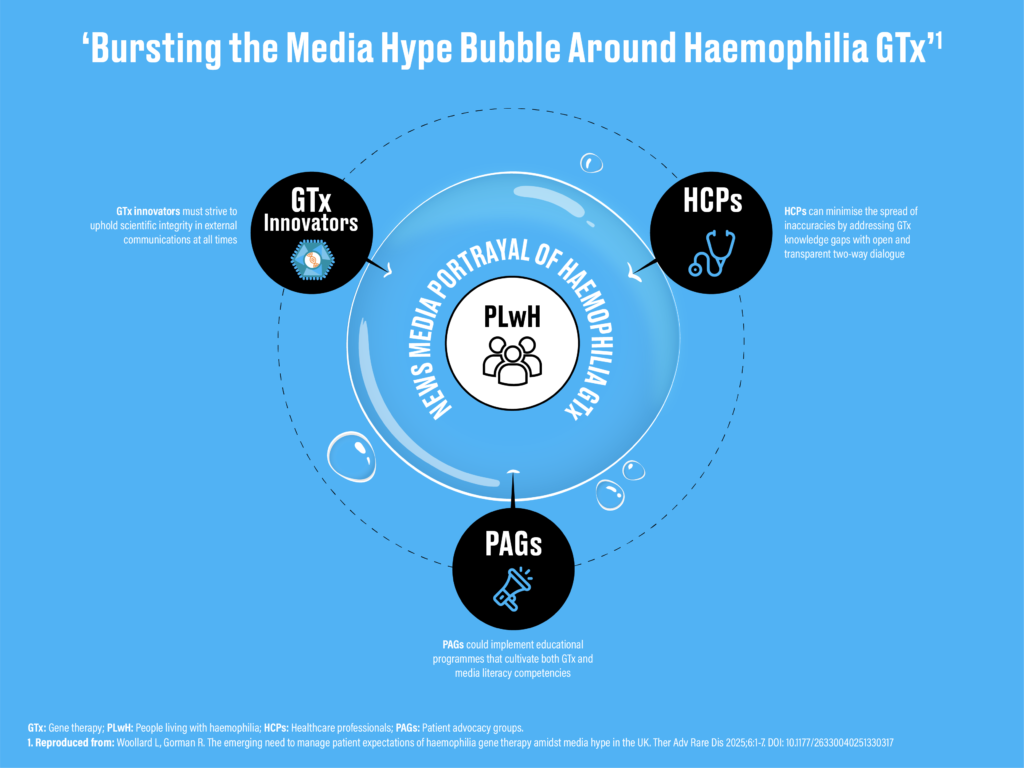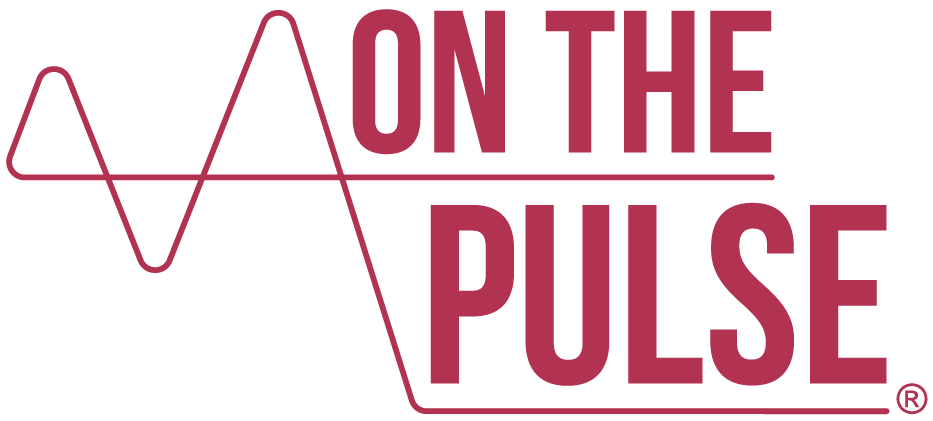
A new editorial, published in the peer-reviewed open access journal Therapeutic Advances in Rare Disease (TAIRD), examines the potential effects of sensationalised news media coverage on haemophilia gene therapy.
Gene therapies have garnered significant public attention in recent years, with haemophilia being a prominent area of focus. However, such coverage often overlooks the complexities and benefit-risk trade-off of these treatments, leading to misconceptions about their true potential.
The editorial, co-authored by Laurence Woollard, MSc, Director of On The Pulse and Dr Richard Gorman, Assistant Professor in Ethics and Social Science at Brighton and Sussex Medical School, discusses how problematic language and framing in news media can perpetuate the idea of a “cure” for haemophilia. This may shape the perceptions of people living with haemophilia and their caregivers, influencing decisions in ways that may not align with the realities of treatment.
The piece stresses the importance of clear, responsible communication, calling for healthcare professionals, patient advocacy groups and gene therapy innovators to proactively manage expectations and promote informed decision-making (see Figure 1).

The full editorial provides a deeper look into these critical issues, which is available to access here.
This editorial builds on the authors’ previous work and advocacy in the advanced therapies space. For more, please see ‘Improving informed consent for gene therapy’.
Acknowledgements
The authors would like to acknowledge Samantha Taylor and Hemali Bedi at SAGE Publishing for their assistance throughout the publication process. Additionally, the authors would like to thank Lieke Bass and Dakota J. Rosenfelt for their contributions to the early ideation of this editorial.
Get in touch
For all work-related enquiries, please email Laurence at: info@onthepulseconsultancy.com

